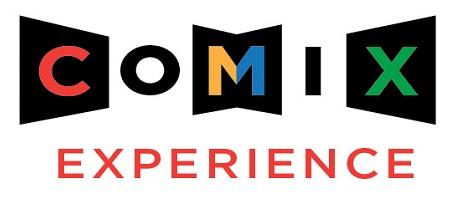Back On The Beat: Jeff's Opening Salvo for the 4/25 Books...
/Has not posting in a week-plus left me chops a little rusty? I think so. Last month, Graeme mentioned how daily reviewing turned his brain into a non-stop reviewer-and-rater of everything that happened to him. And while I also had that, I currently find myself swinging toward the other pole--where almost nothing kicks the reviewing portion of my brain into action. I watched four movies last Sunday, for example, ranging from Duck, You Sucker! to The Black Gestapo and the closest I got to critical analysis was "nice explosions" (for Duck, You Sucker!) and "that was probably the best climactic battle between good and evil to ever take place on somebody's patio" (for The Black Gestapo). So if my reviews this week run to the "hey, these staples do an awesome job of holding the book together, don't they?" side of things, be patient.
52 WEEK #51: Why did it take the end of The Mystery In Space storyline to remind me how much I liked these characters? While I'm griping, trading in a sneering caterpillar that wears glasses and a radio for a gloating, gigantic butterfly beastie is a bit like exchanging a stringless cello for a permanently out-of-tune saxophone. Unless you end up with a supervillain with arms (for fist-shaking and building punching) and legs (for junk-kicking and face-stomping), your upgrade is just as unlikely to be ignored as before. OK, I guess.
Oh, and if they put out a special of all J.G. Jones' covers for 52 on nice paper and a maybe a few essays or something? I'd totally buy that.
ACTION COMICS #848: If this had been a story about Superman dealing with a superhero who doesn't share the Big S's attitudes about non-interference in developing nations, that'd be one thing (and a pretty good idea for a story, I think). But by making the superhero be both religious and faith-powered, the waters are muddied considerably and maybe unnecessarily; all those flashbacks of Clark Kent in church certainly helps with the page count, but the link seems to imply that only rationalist-based individuals should be trusted to decide the fates of others (tell it to the French Revolution, Mr. Nicieza). I'm Eh about it, and hopefully next issue will prove all my various knee-jerk reactions to be simply that.
AMAZONS ATTACK #1: Graeme and Hibbs both had problems with this book, but laid those problems at editorial and gave the creative team a pass. Although I've liked Pfeifer's work in the past, and think Pete Woods' art is damn fine, I'm not so generous. I thought all that stuff with Abraham Lincoln was obfuscatory bullshit that did nothing but killed time and cluttered the issue (at one point, Queen Hippolyta charges into the Lincoln Monument saying something like "Let us show them what we think of their 'Great Emancipator'" and I asked Hibbs, "So the Amazons are attacking because they're angry at African-Americans?" Similarly, on the first page where the dad tells his son about Lincoln, and his son goes "Cool, and then what happened to him?" which no kid ever says after lectures about famous people made into statues because the kid knows if Lincoln had gone on to invent Pac-Man and found Metallica, that would have benn mentioned.) I know Pfeifer is going for an "Independence Day" summer blockbuster feel to things (and he's fortunate to have an artist like Woods who can give the big splodey as well as smaller moments), but it's such a dumb choice it seems lazy.
On the one hand, Pfeifer and Woods deserve better. On the other, let's face it: slumming is slumming. Awful.
BLUE BEETLE #14: Steps a bit into too-cutesy territory maybe, and I'm not sure that I can buy a concept where everyone in the JLA believes Jaime but somehow it's still just him matching wits against aliens posing as friendly vistors. But it's also an issue that advances the plot, is a satisfying read on its own, and has some of the better-written characters you'll find in a superhero book today. Compared to its previous issues, I'd say lowish Good, but good nonetheless.
CONNOR HAWKE DRAGONS BLOOD #6: An enjoyable big finish which, unless I missed something, opens the door for Connor to manifest superpowers in the future. The six people who care about Connor Hawke (two of whom are Chuck Dixon) must be thrilled. I'm not quite one of those six, but I'm getting closer all the time, particularly when competently done OK miniseries like this come along and make an argument for it.
CROSSING MIDNIGHT #6: Fixes (at least for this issue) the one problem I had with the book up until now--the characters' relative helplessness in the face of so much mystical badassery. Considering the last three issues have been varying degrees of awesome, I can only hope that (a) the awesome continues; and (b) it picks up in sales enough to survive. If you ever wanted Miyazaki and Clive Barker to collaborate, you should check this book out. Very Good.











